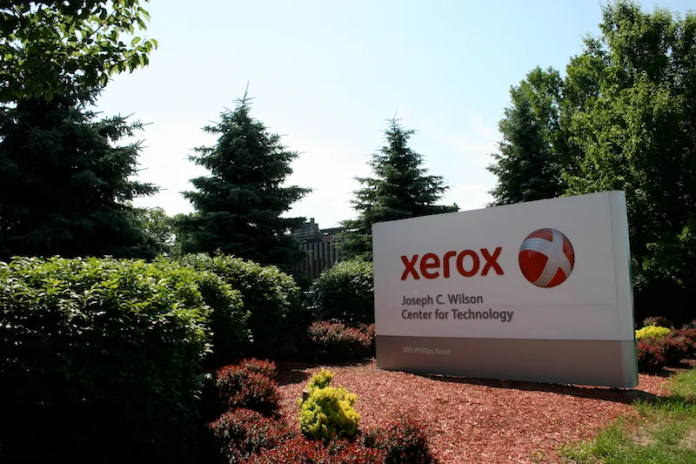
Xerox has released its financial results for both its fourth quarter and its full year ending in December 2023, which make for rather grim reading.
The Q4 figures are best described as a bit of a shocker, definitely not the sort of numbers that anybody really wants to see. The company recorded revenues of $1.77 billion, down 9.1% on the $1.94 billion from the previous year’s Q4 revenues. Most of the revenue in Q4 came from print and other activities, which was down 9.5% from $1.86 billion to $1.69 billion , while the Fittle equipment financing division saw its revenue drop slightly from $101 million to $100 million. At the same time, the inter segment elimination, which is mostly commissions and other payments from the Fittle segment to the print and other segment, improved from a loss of $22 million to a loss of $21 million.
However, the print and other segments saw a massive 49.7% drop in profit $177 million to $89 million, year on year in Q4. Xerox has mostly blamed this on issues with backlogs and suggests that it is still looking for the ideal product mix. At the same time, the financing division profits rose from $1 million to $7 million. Strangely, Xerox has indicated a total profit for Q4 of $96 million close to the top of its press release. But scrolling down to the actual figures, where there is a better breakdown of costs, shows a net loss for Q4 of $58 million, as against a net income of $121 million for Q4 2022.
The full year figures are much better, suggesting that most of the damage came at the end of the year, which is not necessarily the best message to take into the new year. Here, total revenue fell 3.1% from $7.11 billion in 2022 to $6.89 billion in 2023. But the overall profit rose 41.5% from $275 million to $389 million. The print and other business realized a profit of $360 million, 39.5% on the $258 million from 2022, while the Fittle segment recorded a profit of $29 million, up 70.6 % on the $17 million from the previous year.
However, once again the net figures paint a different picture, with a net income of just $1 million, though this is a distinct improvement on the $322 million net loss for 2022.
It’s also worth noting that the full year figures include $167 million in restructuring and related costs, most of which – $132 million – came in the last quarter. At the same time, there’s been a fall in R&D costs, down from $304 million in 2022 to $229 million in 2023.
There are a few interesting facts buried in the figures. The Americas account for 65% of Xerox’s business, with the EMEA region contributing 34 percent and other areas just 1%. The print equipment sales make up 26% of the print segment’s revenue, while the post-sales revenue is 74% , mostly including servicing and rental costs.
In its accompanying press release, Xerox stated that it expects to see stable print demand, growth in digital and IT Services and neutral macroeconomic conditions over the course of this year. However, it also warns that revenues will fall 3-5% , which it blames on reducing a backlog from last year and a change in emphasis of some non-strategic revenue, including lower sales of paper.
The company expects that its operating income will improve by more than $100 million, year-over-year and that it will achieve free cash flow of at least $600 million.
However, the press release also called 2023 a pivotal year for Xerox, which “marked the first full year of our Reinvention” – though it’s hard to say if this is the same reinvention as that announced just a couple of weeks ago.
Steve Bandrowczak, CEO of Xerox, noted, “Last year, steps we took to structurally simplify our business impacted revenue but led to 170 basis points of adjusted operating margin expansion and laid the foundation for successful execution of our Reinvention.”
He added: “As we enter 2024, we are focused on stabilizing and strengthening our core Print business, driving enterprise-wide efficiency and productivity gains through our new Global Business Services organization, and further capturing opportunities in Digital and IT Services. We expect balanced execution on these priorities, supported by our new operating model, will yield significant progress towards our three-year adjusted operating income improvement target of $300 million above 2023 levels.”
Xerox also took the opportunity to reiterate its three-year target of $300 million of incremental adjusted operating income above 2023 levels and a return to double-digit adjusted operating income margin by 2026.
Sadly, there is no real vision as to how the company is going to achieve this, other than a lot of cost-cutting and restructuring. There is some mention that the declining revenues are down to lower sales income in non-strategic items like paper and IT devices, as well as the loss of revenue from the Fuji Xerox arrangement and from PARC, but little idea of how to really replace this. There’s nothing to suggest that Xerox’s senior management has any idea why the company’s future might matter to any of the rest of us.
First published on nessancleary.co.uk on 30 January















